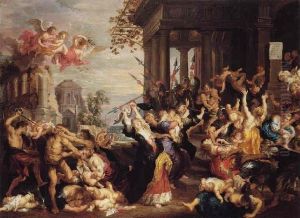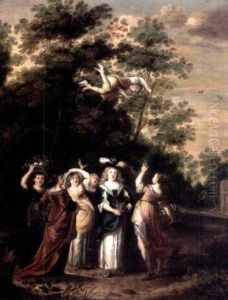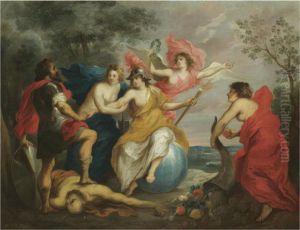Gilliam Forchondt Paintings
Gilliam Forchondt was a Flemish Baroque painter, art dealer, and entrepreneur active during the 17th century in Antwerp, a city renowned for its vibrant artistic community. Born in 1601 into the Forchondt family, a lineage with deep roots in the art world, Gilliam was well-positioned to make his mark. His family's involvement in art dealing provided him with an extensive network and knowledge of the art market, which he would later leverage to expand his activities beyond painting to include art dealing and entrepreneurship.
Forchondt's artistic endeavors were influenced by the Baroque style, characterized by its dramatic use of light and shadow, rich color palette, and dynamic compositions. Though specific details about his artistic training are sparse, it is known that he was part of the Antwerp Guild of Saint Luke, an association that played a critical role in the careers of artists in the region. This affiliation not only provided him with formal recognition but also allowed him to engage with other artists, including Peter Paul Rubens and Anthony van Dyck, whose styles and techniques likely influenced his work.
Beyond his contributions to painting, Forchondt's most significant impact was through his work as an art dealer and entrepreneur. He expanded the family business, establishing a successful international art dealership that exported European artworks to markets in Spain, Portugal, and the Spanish and Portuguese colonies in the Americas. This operation involved not only trading paintings but also producing copies of popular works, a common practice at the time, which catered to the demand for European art in these overseas territories.
Gilliam Forchondt's career reflects the interconnectedness of art production, commerce, and cross-cultural exchange in the 17th century. His ability to navigate these realms underscores the role of art dealers in the dissemination of artistic styles and trends beyond their points of origin. Forchondt died in 1667, leaving behind a legacy that illustrates the significance of Antwerp as a center of artistic and commercial activity during the Flemish Baroque period. His work and entrepreneurial spirit contributed to the spread of Baroque art, influencing tastes and preferences in both Europe and the New World.






